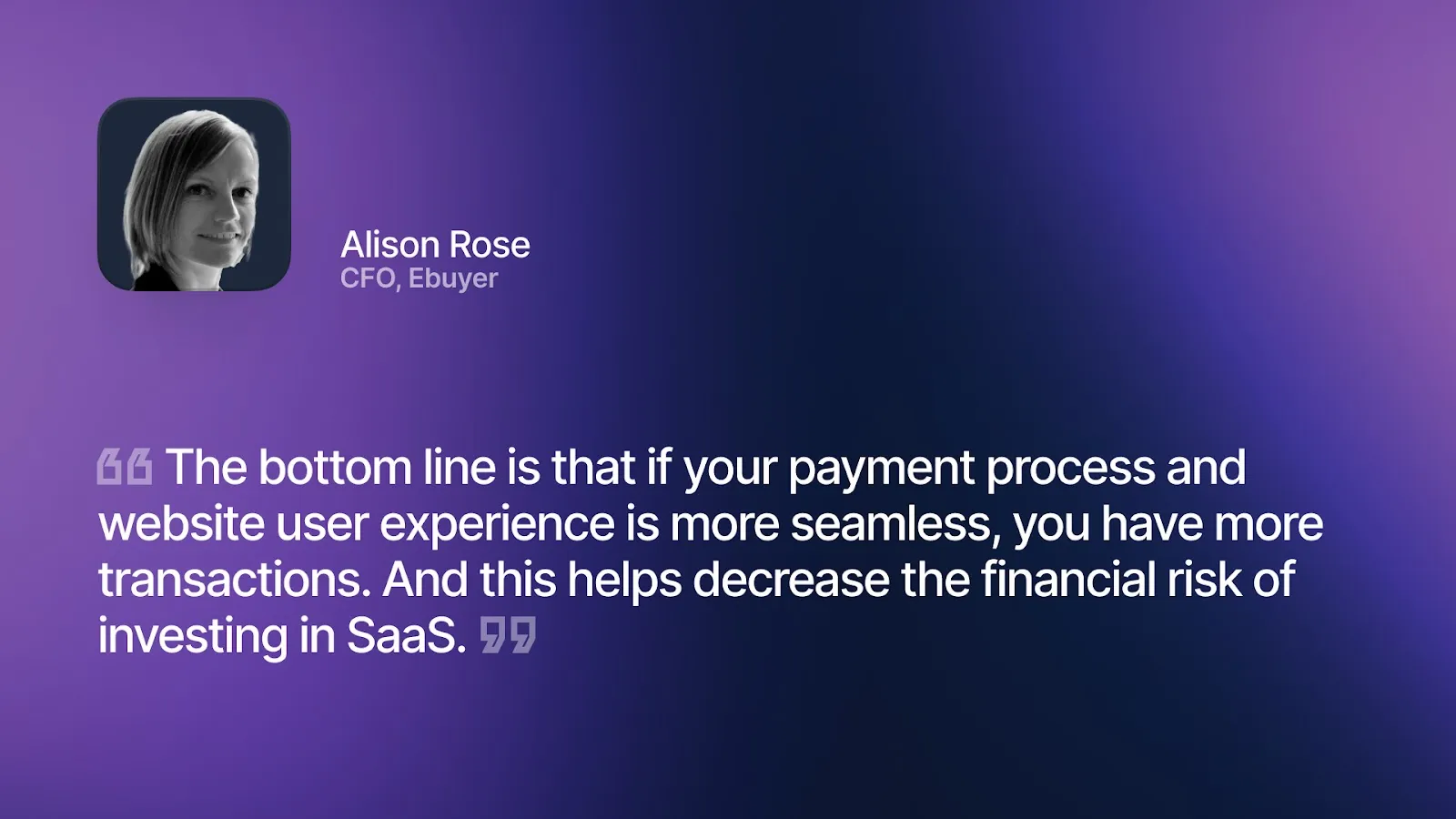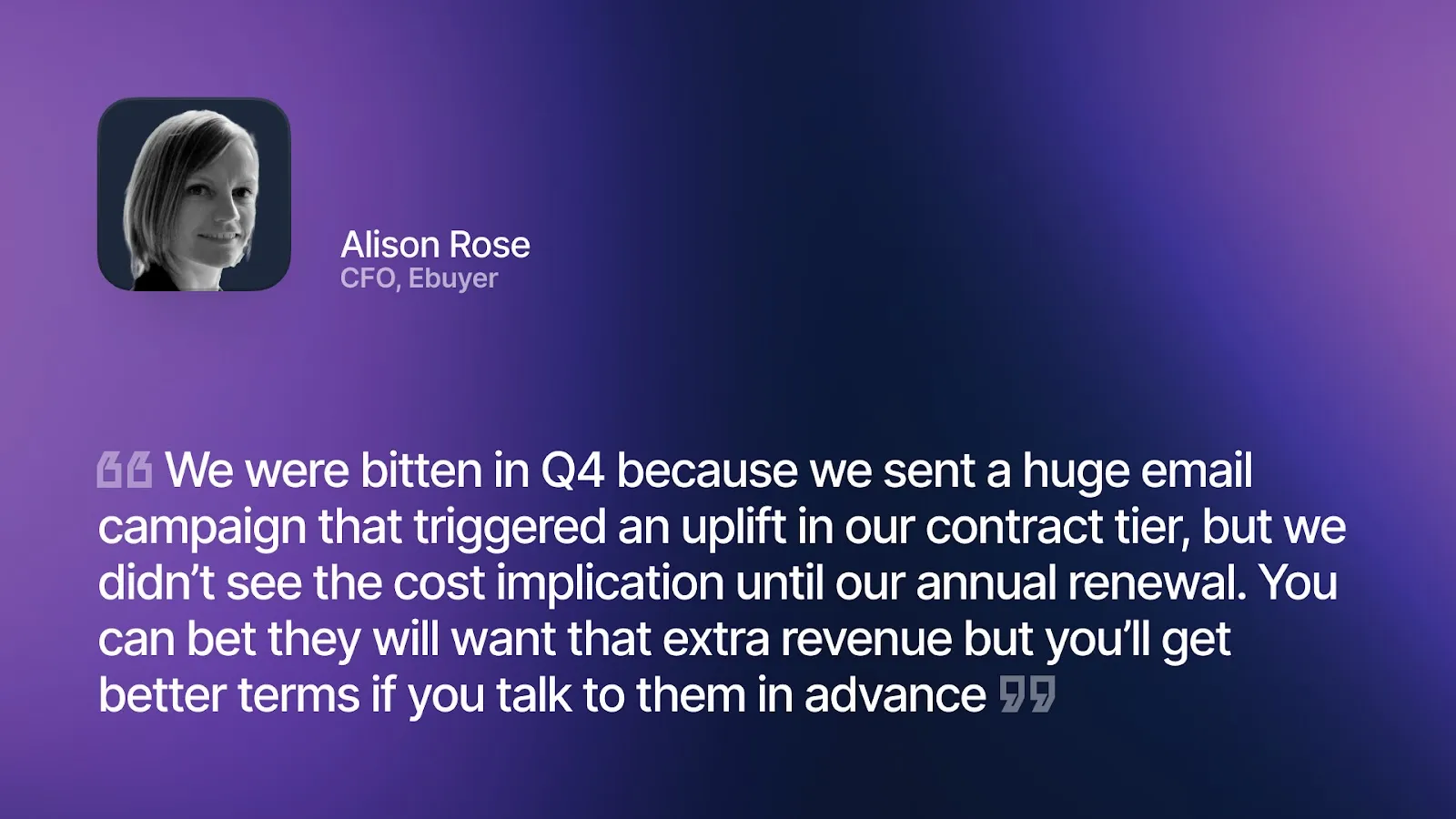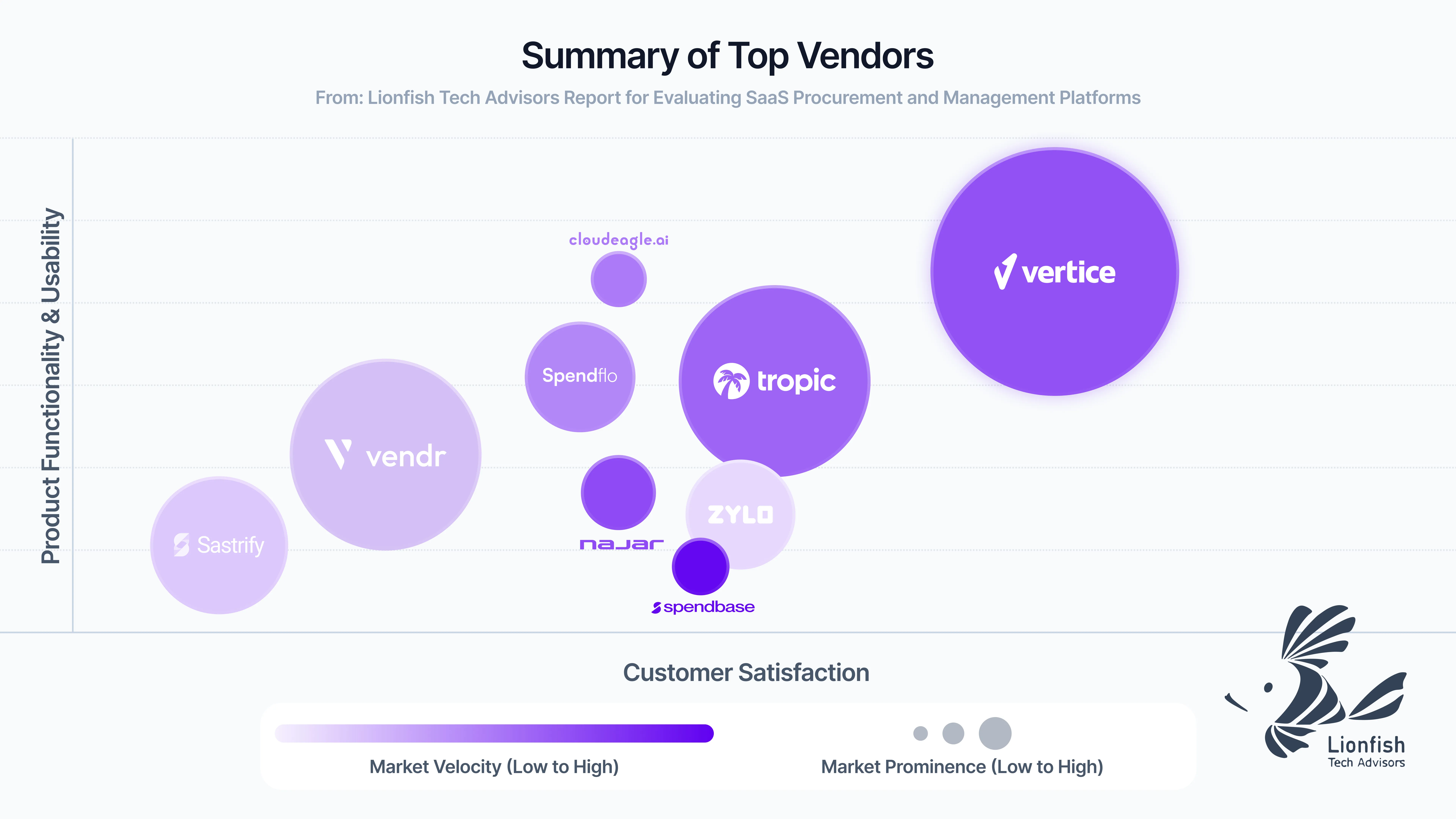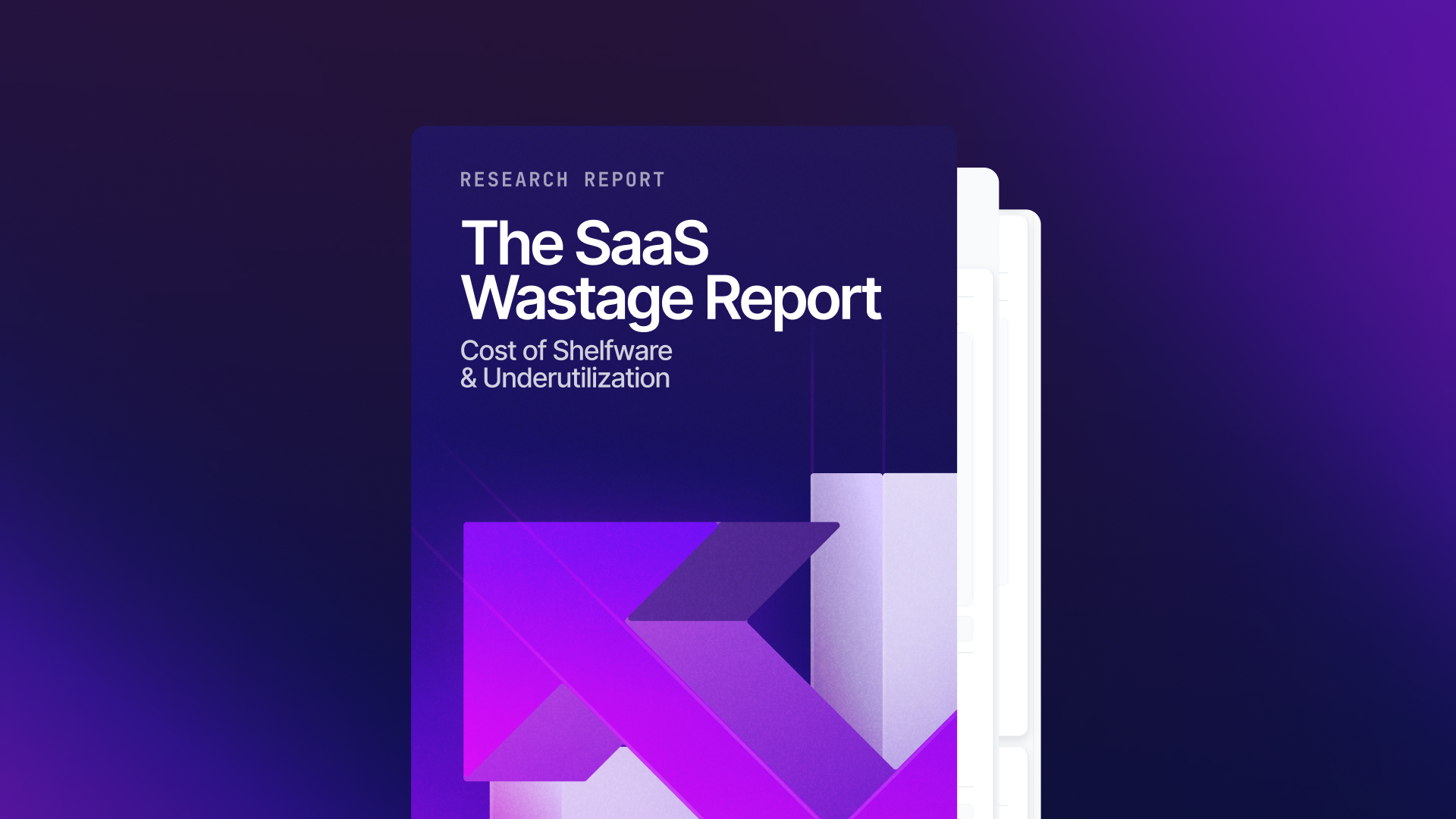



Take a self-guided tour of the platform.
Less SaaS wastage in just six months.
See why Vertice is trusted by top procurement leaders.
CFO-focused strategies to reduce preventable spend and unlock more value from your SaaS investments.



Finding how to control your SaaS costs whilst encouraging business growth is always a delicate balancing act.
In ecommerce, where margins are tighter than other industries, it is even harder.
After all, it is not unusual in ecommerce for brands to rely on 3-4 months of a year for almost their entire annual revenue. Or to suddenly become incredibly popular almost overnight, and need to scale instantly to take advantage.
In such a ‘feast or famine’ environment, how can ecommerce finance and procurement leaders balance the need to scale up to meet demand with the need to keep costs as low and predictable as possible?
Alison Rose, CFO of the fast-growing $175m+ ecommerce brand Ebuyer and former finance leader at SharkNinja, sat down with Jesse Russell, Head of Purchasing (NA & APAC) at Vertice to share her advice on this issue.
Read on for unmissable insights, including:
- The steps you need to take to evaluate the potential ROI of a SaaS tool.
- How to right-size your SaaS contracts to account for seasonality and growth in advance.
- The top mistakes ecommerce CFOs make when managing tech spend.
- How to work with department heads to encourage them to pitch new SaaS requests in a way that makes it easy to approve.
How can a CFO balance the need for cutting-edge technologies that drive growth with remaining cost-optimized?
Ecommerce businesses have notoriously tight margins, so every penny spent on SaaS must have a clear link to growth. Before committing to any software spend, Alison recommends CFOs carefully consider whether a tool will provide trackable contributions to revenue uplift.
Alison uses a tried-and-tested method to understand the growth opportunity and how this compares with upfront investments like onboarding or development costs. These steps ultimately help you to evaluate how ‘risky’ a purchase is and how it fits into the overall needs of the business.
Ecommerce businesses, given their seasonality, might favor SaaS tools that have revenue-share models or offer cost incentives alongside potential revenue uplift.
As for deciding where to invest in SaaS, Alison suggests that ecommerce businesses prioritize tools that increase sales and enhance the customer journey.

What causes tech overspend in ecommerce, and what are the main culprit areas?
For Alison, the most common trap an ecommerce business can fall into is duplicating software tools.
At eBuyer, for example, Alison discovered that there were 3 separate CRM systems in place - each specializing in different parts of the customer journey. By taking a holistic view of eBuyer’s tech stack and business requirements, Alison could see that they consolidate these tools into a single CRM system. This has significantly reduced eBuyer’s overall SaaS spend and freed up precious time spent managing multiple tools.
To tackle tech duplication in your ecommerce business, Alison suggests implementing a centralized procurement process which includes regular forecasting. Ultimately, it comes down to being diligent, thorough and thinking ahead of the game.
How do you right-size a SaaS contract to accommodate ecommerce seasonality or potential growth?
Alison learnt the hard way that a reactive approach to managing SaaS contracts leads to unexpected costs down the line:

To get maximum ROI and reduce the risk of unexpected costs, Alison recommends proactively talking to vendors about your needs - whether that’s projected uplifts in usage or growth in employees.
Thankfully, ecommerce seasonality is relatively predictable and businesses can often predict spikes around national holidays or peak shopping seasons.
So what are Alison’s tips for getting ahead of the game?
- Forecast as far in advance as possible and think carefully about peaks or troughs in activity or demand throughout the year that might affect your SaaS usage - this will help you highlight areas where you might need to upgrade or cut your tech stack capabilities.
- Negotiate contracts with growth in mind. Typically, companies agree to a pricing structure for 1 year because they don’t know where they are going to be in 12 months, but that can easily spiral into overspending when activity peaks.
- Communicate your likely seasonal requirements as early as possible with internal stakeholders and software vendors about what they can do to support seasonal uplifts in traffic.
What makes your life easier when making a decision to buy or renew a software tool?
Ecommerce CFOs are bombarded with requests to sign off on new technology tools and they need to be sure that it’s worth the investment.
The biggest mistake Alison sees is stakeholders making requests based on opinion, not data.

In summary - finance needs to be at the forefront of enabling both spend control and growth
In ecommerce, CFOs need to combine collaborating with stakeholders, consistent forecasting and the overall growth goals of the business to decide on how best to deploy, size, and control their SaaS.
Balancing the financial risk of any SaaS investment with the potential gains it brings is made easier with accurate forecasting and benchmarking, and getting the right tool for the business.
Vertice is the leading platform for finance leaders to optimize their SaaS spend. With world-class technology and a team of expert buyers, you can:
- Keep track of all your SaaS contracts and renewals in one place.
- Let Vertice handle, or support with, your SaaS purchasing, and save up to 25% on your spend.
- Reveal underutilized and unknown company subscriptions.
- Gain key insights into your contracts to spot opportunities to re-negotiate for better terms.
- Leverage our vendor benchmarks and insights from over 16,000 companies.
Vertice is managing over $3.4bn for hundreds of CFOs worldwide - with dedicated support and insight from our procurement experts so they can be comfortable in getting the burden of SaaS contract management off of their plate without losing oversight or risking a drop in quality.
Speak to one of our team today to discover how Vertice can transform your SaaS management.
.webp)











.webp)



